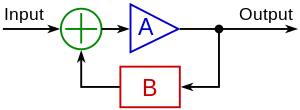Just as in the plays of ancient Greece where the stories had certain ritualistic elements, but each author chose to tell them with different styles, in time travel books the plot isn't as important as how it unfolds. That said, here's my summary: a guy, Henry, has a genetic problem that gives him fits, sort of like epilepsy, but instead of blacking out he's displaced in time. He arrives in the new time naked, and usually doesn't know where or when he is. He can't control his jumps, but he's drawn to places and times that have strong psychological ties for him. In this way he meets his future wife, Clare, when she's only six, and then at random intervals through her life.
I had some problems with this book, the least of which was the title. It seems like there are too many books called "The Memory Keeper's Daughter" or the "The Zookeeper's Wife" or the "Cheesemaker's Niece" (OK, I made up the last one). Moreover, the story isn't about the time traveler's wife: it's about the time traveler, but I figured some editor probably changed the title to fit a publishing trend.
Another issue was that the non-time travel problems seemed to be falsely inserted into the story, and then easily resolved. Clare's mom is an alcoholic and was forced into marriage by an unwanted pregnancy, but it turns out OK in the end. Henry's dad also drinks, and ruins his career as a concert violinist, but we know from time traveling he'll be happy in the future, so it's all good. Even the wedding scene had a false sense of tension that was too easily resolved.
Which brings me to the biggest obstacle in the plot: Niffenegger's conceit is that Henry can't change the past, but only observe it. Yet his appearance to his to his future wife when she's six years old has a weird vibe. As Henry pops into young Clare's time line he teaches her chess, French and other his other interests, forming her into a person that will love him. It's almost as if Niffenegger had taken the premise for the old game of Mystery Date, and turned it into a literal plot. Who will Clare marry? It's all pre-ordained: a muscular dark stranger from the future, who will know all her inner desires, and will be her soul-mate. Does anyone else find this a little trite? Sure, it's a common romantic dream, but presented this way I thought it was also anti-Feminist -- a romance novel disguised as sci-fi where the female lead can only watch the adventure.
Despite the problems, I still liked reading the book. The story is told from the points of view of the two main characters, and annotated with dates and ages (eg: "Saturday, April 8, 1989 (Clare is 17, Henry is 40)") so you can track whether Henry is in or out of time. The first 200 pages speed along as you learn the history or future of Henry and Clare and their friends and family. I like how Niffenegger presents their out-of-time meetings from the different points of view. The plot cleverly clicks together like a puzzle as they meet for the first time in real time and piece by piece the whole picture forms.
Niffenegger also does a great job of exploring the possibilities of Henry's particular form of time travel. I don't understand how they conclude it's a genetic disease, but that's a minor bump. From there she asks various questions. Can a time-traveler drive a car? What sort of person does it take to appear in a city, naked, without any resources and survive for couple of days. Can a time-traveling condition complicate a pregnancy? (Answer: and how!)
The final question she poses concerns death and dying and whether life after death exists. The last couple sections of the book I lived with Henry as he approached his end and even though he'd seen his own death, Niffenegger added interesting twists and details based on time travel. And because of the time travel, Henry's possible appearances into the future leave us with literal metaphor (is that possible?) of memories of loved ones living on with us.
Despite some problems, I enjoyed reading The Time Traveler's Wife.
![Reblog this post [with Zemanta]](http://img.zemanta.com/reblog_e.png?x-id=90255836-e628-4867-ab46-fd9690708e73)

![Reblog this post [with Zemanta]](http://img.zemanta.com/reblog_e.png?x-id=98a06311-8a72-44f8-8d9b-b3d8398dd5d0)
![Reblog this post [with Zemanta]](http://img.zemanta.com/reblog_e.png?x-id=461483e3-e8f0-42f0-a273-a7712b2ec6c7)